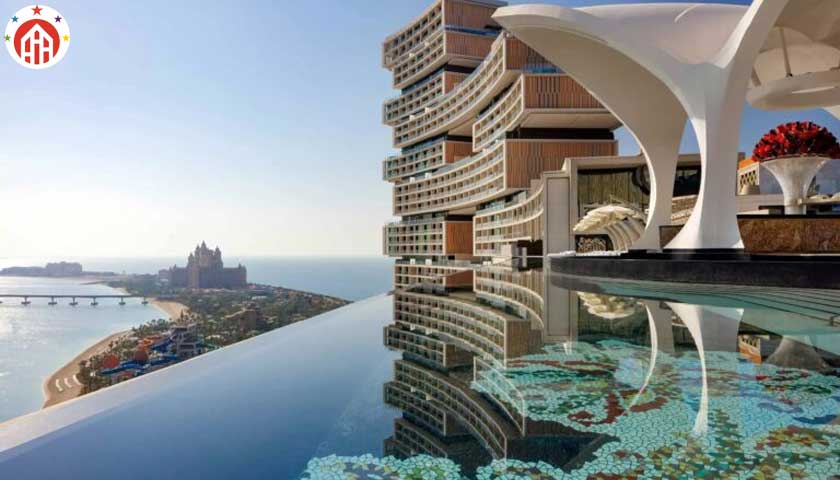2025 Tourism Revenue Targets and Strategies: Harnessing Technology and Trends
The global tourism industry is on the cusp of a transformative era in 2025, driven by ambitious revenue targets, cutting-edge technologies, and evolving traveler preferences. As countries strive to capitalize on the post-pandemic travel surge, they are leveraging artificial intelligence (AI), social media, and innovative strategies to boost tourism income. Luxury hotels, a cornerstone of high-end tourism, are also adapting by integrating advanced technologies and dynamic pricing models to cater to affluent and tech-savvy travelers.
Tourism Revenue Targets for 2025
The global travel and tourism market is projected to generate USD 955.9 billion in 2025, with a compound annual growth rate (CAGR) of 3.9% through 2029. The United States leads with an estimated USD 224 billion, fueled by robust domestic and international travel demand. Europe, holding 34.5% of the global luxury travel market in 2023, remains a powerhouse, with countries like Germany, France, and the United Kingdom driving significant revenue. The Asia-Pacific region is expected to experience the fastest growth, with a luxury travel CAGR of 9.6% from 2025 to 2030, propelled by rising disposable incomes in China, India, and Southeast Asia.
Turkey has set a bold target of USD 63.6 billion in tourism revenue for 2025, aiming to attract 61 million visitors as part of its Medium-Term Program. This aligns with its strategy to leverage cultural heritage, coastal attractions, and emerging tech-driven tourism initiatives. Emerging markets like the United Arab Emirates, Thailand, and the Maldives are also prioritizing tourism, with the global tourism and hospitality market projected to reach USD 8.7 trillion in 2025 and USD 11 trillion by 2033 at a CAGR of 3%. In New York City, visitor spending is expected to recover to USD 47.4 billion by 2025, with international arrivals reaching pre-pandemic levels. Middle Eastern nations, particularly Saudi Arabia, are investing heavily in luxury tourism, driven by a growing number of high-net-worth individuals (HNWIs).
Strategies to Boost Tourism Revenue
Countries are adopting innovative, technology-driven strategies to meet their revenue goals, focusing on AI, social media, sustainability, and niche markets. Below are the key approaches shaping the industry in 2025:
- AI-Powered Personalization: Artificial intelligence is revolutionizing tourism by enabling hyper-personalized experiences. AI algorithms analyze traveler data to recommend tailored itineraries, accommodations, and activities. For instance, Turkey uses AI-driven platforms to suggest customized cultural tours, while luxury travel agencies like Scott Dunn employ AI to craft bespoke trips. Chatbots and virtual assistants, powered by generative AI models like Grok 3, provide 24/7 customer support, handling bookings and inquiries in real time. Predictive analytics also help destinations forecast demand and optimize resource allocation.
- Social Media and Social Commerce: Social media platforms like Instagram, TikTok, and X are pivotal in driving tourism revenue. In 2025, social commerce—where travelers book directly through shoppable posts—is a game-changer. Turkey’s tourism board leverages TikTok campaigns featuring viral videos of Cappadocia’s hot air balloons and Istanbul’s historic sites to attract younger audiences. Luxury hotels create Instagram-worthy spaces, such as infinity pools and art installations, to encourage user-generated content (UGC) that boosts visibility. Influencer partnerships, particularly with micro-influencers, are also effective, with 68% of travelers in 2024 citing social media as a key factor in destination choice.
- Sustainability and Regenerative Tourism: Sustainability remains a top priority, with 74% of travelers in a 2024 Accor survey prioritizing eco-friendly options. Countries like Thailand and the Maldives promote carbon-neutral resorts and regenerative tourism, which focuses on leaving destinations better than found. AI tools monitor environmental impact, optimizing energy use in hotels and tracking carbon footprints. For example, Europe’s Beyond Now Network transforms hospitality businesses into sustainable enterprises, while Costa Rica markets its eco-luxury lodges to environmentally conscious travelers.
- Augmented and Virtual Reality (AR/VR): AR and VR technologies are enhancing pre-travel experiences. Virtual tours allow travelers to explore destinations or hotels before booking, increasing confidence in their choices. Turkey’s tourism campaigns include VR experiences of historical sites like Ephesus, while luxury hotels use AR apps to provide interactive guides to on-site amenities. These technologies are projected to grow at a CAGR of 12.5% in tourism applications from 2025 to 2030.
- Niche Market Expansion: Countries are targeting niche segments like wellness tourism, adventure travel, and bleisure (business-leisure) travel. Wellness tourism, projected to grow at a CAGR of 8.3% through 2030, is a focus for destinations like the Maldives, which offers luxury spa retreats, and India, with its yoga and Ayurveda programs. Adventure tourism, including activities like birdwatching in Europe or safaris in South Africa, appeals to thrill-seekers. Bleisure travel is also rising, with 70% of business travelers in 2025 planning to extend trips for leisure.
- Enhanced Connectivity and Infrastructure: Improved air connectivity and 5G networks are making remote destinations more accessible. Europe benefits from high-speed rail and relaxed visa policies, while Asia-Pacific countries like China and India see increased arrivals due to streamlined travel regulations. AI-powered traffic management systems at airports and tourist sites enhance visitor experiences by reducing wait times.
- Blockchain and Secure Transactions: Blockchain technology is gaining traction for secure bookings and loyalty programs. In 2025, some luxury hotels use blockchain to ensure transparent pricing and protect against fraud, appealing to tech-savvy HNWIs. Cryptocurrency payments are also emerging, with 15% of luxury travelers expressing interest in crypto-based bookings, according to a 2024 industry report.
Luxury Hotels: Trends, Technology, and Pricing
The global luxury hotel market is projected to reach USD 139.41 billion in 2025, growing at a CAGR of 9.43% to USD 218.77 billion by 2030. North America holds a 36% market share, followed by Europe and the fast-growing Asia-Pacific region. Luxury hotels are integrating advanced technologies and innovative pricing strategies to meet the demands of affluent travelers, millennials, and the aspirational middle class.
Key Trends in Luxury Hotels
- AI-Driven Guest Experiences: Luxury hotels use AI to personalize every aspect of a guest’s stay, from room temperature settings to curated dining menus. For example, Fauchon l’Hotel in Paris allows guests to customize portion sizes via an AI-powered app. AI chatbots provide real-time concierge services, while facial recognition technology streamlines check-ins.
- Smart and Sustainable Design: Smart rooms equipped with IoT devices, such as voice-activated lighting and climate control, are standard in luxury hotels. Sustainability is also critical, with hotels adopting eco-friendly materials and energy-efficient systems. Six Senses and Amangiri lead with net-zero properties and regenerative initiatives like local reforestation projects.
- Immersive Technologies: AR and VR enhance guest experiences by offering virtual tours of nearby attractions or interactive spa menus. Some hotels use holographic displays in lobbies to showcase local culture, creating memorable first impressions.
- Culinary Innovation: Luxury hotels are elevating dining experiences, generating USD 32.5 billion in revenue in 2023. Michelin-starred chefs collaborate with hotels to offer exclusive menus, while AI analyzes guest preferences to suggest personalized dishes. Cultural dining experiences, such as farm-to-table programs, are also popular.
- Social Media Integration: Hotels design photogenic spaces to encourage social media sharing, driving organic marketing. For instance, Maldives resorts create overwater villas with glass floors, perfect for Instagram posts. Live-streamed events, such as chef-led cooking classes on TikTok, further engage audiences.
Pricing Strategies
Luxury hotel pricing in 2025 is dynamic and data-driven, leveraging AI and market trends:
- Dynamic Pricing with AI: AI-powered revenue management systems like Atomize adjust rates in real-time based on demand, competitor pricing, and traveler behavior. This ensures competitive pricing while maximizing revenue.
- Direct Booking Incentives: Hotels offer discounts and exclusive perks for direct bookings, reducing OTA commissions. Loyalty programs, enhanced by blockchain for secure point tracking, provide better rates for repeat guests.
- Thematic Packages: Hotels create packages tailored to niche markets, such as wellness retreats or cultural immersions. For example, resorts in Thailand bundle spa treatments with meditation sessions, appealing to wellness travelers.
- Seasonal and Event-Based Pricing: Rates vary by season, with higher prices during peak periods like holidays or festivals. Hotels near major events, such as Fashion Week in New York, adjust pricing to capitalize on demand.
The average daily room rate (ADR) for luxury hotels varies by region, with Manhattan’s ADR expected to reach pre-pandemic levels by 2025. Globally, luxury hotels maintain high occupancy rates (76% in 2024) while balancing premium pricing. Direct bookings accounted for 42% of revenue in 2024, but OTAs are projected to grow at a CAGR of 8.0% through 2030 due to their marketing reach and convenience.
Regional Insights
- North America: The U.S. leads the luxury travel market, with a CAGR of 8.2% through 2030. Platforms like The Luxurist, launched in January 2025, use AI to connect travel advisors with 3,300+ global properties, enhancing booking efficiency.
- Europe: Europe’s cultural heritage and infrastructure drive its 34.5% share of the luxury market. Germany’s high CAGR is fueled by adventure tourism, while France and Italy leverage AI-driven cultural tours.
- Asia-Pacific: Rising disposable incomes in China and India drive a 9.6% CAGR in luxury travel. Thailand and the Maldives focus on wellness and eco-tourism, supported by 5G connectivity and social media campaigns.
- Middle East and Africa: Saudi Arabia’s Vision 2030 promotes luxury tourism, with mega-projects like NEOM attracting HNWIs. South Africa combines safari experiences with high-end accommodations, enhanced by AR-guided tours.
Challenges and Opportunities
Challenges include rising operational costs, cybersecurity risks from increased tech adoption, and geopolitical uncertainties. Hotels are addressing these by investing in AI-driven cost optimization, upskilling staff in digital tools, and diversifying revenue streams through dining and spa services. Opportunities lie in emerging technologies like blockchain for secure transactions, the growing wellness and adventure tourism sectors, and social commerce, which drives direct bookings via platforms like Instagram and TikTok.
In 2025, the global tourism industry is poised for significant growth, with countries like the U.S., Turkey, and those in Europe and Asia-Pacific setting ambitious revenue targets. By harnessing AI, social media, AR/VR, and blockchain, nations and luxury hotels are redefining travel experiences to meet the demands of modern travelers. Sustainable practices, personalized offerings, and dynamic pricing strategies are key to achieving these goals. As technology continues to shape the industry, 2025 promises to be a landmark year for global tourism, blending innovation with unforgettable experiences.




